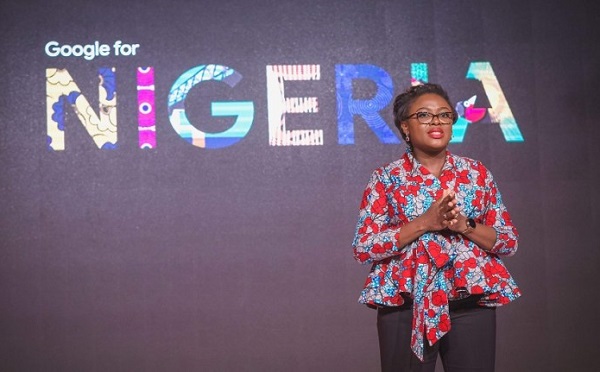Renewable energy generation, usage, and management have been a subject of continuous interest due to its connectedness with almost every other sector of human endeavor, as power remains the ability to get work done. Moreover, effective and efficient utilization based on custom requirements has necessitated very flexible options in the storage systems space premised on ease of portability for other second-nature use by humans in mobile devices, smart homes, and auto-mobility.
All these have made discussion of environmental effects on the energy life-cycle heightened as clean energy is at the center of global concerns for effective management and better living standards for humans. More awaits us in the coming years as artificial intelligence and big data analytics make trend analysis useful in continuous learning and improvement that opens the door to new possibilities of advantage for humanity.
Renewable energy is derived from sources that obviously refills, but often limited in flow; these resources are most often limitless with regard to duration, however often limited in the amount of energy available measured in time. Some examples of renewable energy sources include: Biomass (from the mass of living organisms, including plants, animals, and microorganisms), Hydropower (using a dam or diversion structure to alter the natural flow of a body of water), Geothermal (from heat continuously produced inside the earth), Wind (a group of wind turbines in the same location used to produce electricity) and Solar (utilizes thermal energy from the sun that is abundant, yet cheap). Moreover, sources have it that renewable electricity generation in 2021 should expand by over 8% to reach 8,300 TWh (the swiftest year-on-year increase since the 1970s). However, Solar PV and wind have gained heightened acceptance and use and are projected to contribute about two-thirds of renewable energy growth (with China accounting for about half of the global increase in renewable electricity in 2021, closely followed by the United States, the European Union and India). It is important to note that US ($20.49 Tn) and China ($13.4 Tn) are currently the biggest economy in the world today (both accounting for 36.84% of the total world GDP, more than a third). In consonance with this narrative, some large corporations and startups within Nigeria are beginning to position around the generation, transmission and distribution of electric energy bearing in mind the huge potentials it makes possible in the sustained development of great economies.
Furthermore, renewable energy can be stored in a number of different ways, including: Flywheels energy storage (electricity used to accelerate a flywheel and stored as kinetic rotational energy, and later used to drive a generator for reconversion during high energy demand periods); Compressed air energy system (electricity compresses air at up to 1,000 pounds per square inch and stored often in underground caverns, later on released to generate electricity through expansion turbine generator); Pumped hydro storage system (where electricity is used to pump water upwards – during lower demand periods – from a lower to a higher reservoir, such that when the water is released, it flows downward through a turbine to generate electricity during peak demands); Thermal energy storage (electricity produces thermal energy, and then stored up for example as iced blocks and later used for cooling when electricity demand is higher); Electrochemical storage –
batteries (like rechargeable batteries used to store up electricity until it is needed – some battery technologies include lithium ion and lead acid). We can quip that our reality today shows that storing energy in batteries seems the most handy solution due to its portability, ease of batching, ease of customization to voltage and current requirement and transfer – like our mobile phones and wrist watches use. This has also been a big part of the development of electric vehicles, and pioneers in that market, such as Tesla, are focusing their research and development efforts on battery storage for solar and wind systems giving researchers access to more support from several corporate, governmental and non-governmental organizations. Additionally, it is clear that storage simply attempts to create a balance of energy between low and high demand periods, as electricity is often stored when demand is low and reconverted for use during peak demand periods. This reality immediately points to a very salient point which is efficient and effective energy management to minimize losses leading us to Distributed Energy Systems (DES).
Advertisement
This houses a diverse combination of electricity generation, storage and energy monitoring and control solutions. It can allow energy to be customized to very unique demand requirements and applications that include carbon reduction (a measure of its cleanness), energy efficiency (lowered waste), cost savings, and supply security. Discussions around this has led to the use of artificial intelligence over communication channels such as the fiber optics for more effective monitoring and loss reduction. Electrical grids have made use of it for over three decades for their utilities to manage and monitor the different aspects of their transmission and distribution networks while providing infrastructure for their communications needs. Fibre optics cable buried within transmission cables help to ensure energy traceability, energy theft and tamper proof, energy use, ease of purchase and distribution. So much has been made possible through the synergy and intelligence of a superposed communication with AIon the energy lifecycle. The applicationof machine learning analyzes the current historical weather data to provide accurate energy forecasting. Several power companies make use of such forecast data to effectively manage the energy systems. With a good forecast, companies produce renewable energy and store it up for utilization at a later time. They plan for the challenge and utilize the help of multiple generation channels to keep the power supply uninterrupted.
In addition, a lot of power companies stay informed about how much energy will be required in the upcoming daysthrough the use of data analytics to predict energy consumption in households. Based on that, they can manage their grids without any outage. If the consumption is going to be high, they can raise energy production. Alternatively, in some parts of the year, when energy demand is low, production can be lowered to avoid wastage.
However, the energy lifecycle spanning its generation, storage and utilization has some indirect positive and negative impacts on the environment. For an example, storage can help to integrate more renewable energy options into the electricity grid based on different criteria like efficiency of generation, and cleanness of its output among others. This often helps generation facilities operate optimally, while reducing the use of less efficient generating options. Efficient storage can delay or totally avoid the need to build additional power generation plants or transmission and distribution infrastructure which saves money, space and time (the core focus of technology, a better way of getting things done) – all of which in turn helps the environment. Some negative impacts of electricity storage as in the earlier depend on the efficiency and type of storage technology used. For an example, batteries are made from raw materials like lithium and lead, which can present environmental hazards if not properly disposed or recycled. Additionally, some electricity is lost due to heat during the battery storage process. The foregoing have led to heightened discussion on the effectiveness of management with artificial intelligence and cross platform learning made possible through big data analytics. Useful country-wide available big data can be analyzed for trends and creation of mathematical models that serve the unique energy needs and requirements of communities and cultures. The intelligence availablein historic weather data and customer consumption cycle opens energy masters to whole new worlds of opportunities and possibilities with mobile technologies and the future ofenergy for better humanity. Energy is at the center because it begins and ends the work cycle as in closing goes Eleanor Roosevelt that the future belongs to those who believe in the beauty of their dreams. The energy dream is a good one with something in it for everyone as we jointly make it our reality – clean and affordable energy for everyone. When energy works, telecommunications, manufacturing, auto-mobility, service, hospitality, and life in general works. Tech startups need to create supply channels to meet up with the imminent repeat demand requirements of over 1.3 billion people in Africa with 200+ million of them in Nigeria, while technology leverage in energy management remains an excellent scalable entry point.
Advertisement
This remains a going concern and I am open to conversations that further on the foregoing while thanking you for your investment in time. Yours in tech, Olufemi Ariyo. Email:[email protected]
Add a comment






